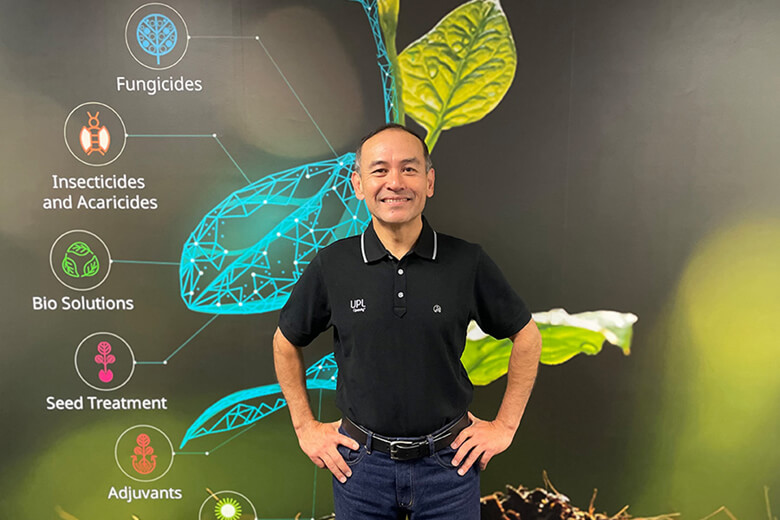In his video David Lingan, UPL NZ Ltd.’s Adjuvant Product Manager and passionate adjuvants advocate, explains how the products optimise crop protection.
Watch now or read more below.
What’s missing in crop protection? Why programmes sometimes fail
Sometimes, spray programmes, seemingly inexplicably, fail to meet expectations. The product is proven. So, what went wrong?
Oftentimes, there’s something missing. That’s according to David Lingan UPL NZ Ltd.’s Adjuvant Product Manager. David says crop protection products can’t always cram everything in. “That’s where adjuvants come in. They provide attributes the actives don’t have. These include rainfastness and improved penetration.” By giving those extra benefits he says, adjuvants ensure you get the best out of herbicides, insecticides, and fungicides.
Sustainable solutions provider, UPL NZ Ltd. certainly know the category well. Previously Elliott Chemicals Limited, they began work on adjuvants in this country more than two decades ago. Today, they are industry leaders with a portfolio of 22 proven adjuvant products.
Special role for each adjuvant
Each of the products has a special role to play. These range from optimising crop protection products’ efficacy and improving rain-fastness, to “softening” water, cleaning spray gear, and reducing drift.
David says adjuvants are a very broad product category. “Alone, they have no crop protection properties. But working with a herbicide, fungicide, or insecticide their very clever science multiplies effectiveness and add benefits.”
“The ability to get sprays ‘to, on and in’ are what adjuvants bring to the process.”
He says surfactants, probably the most well-known and widely used adjuvants, have a major role to play, especially in hard to wet crops like brassicas.” Water, which is up to 90+% of a spray, has high surface tension. It doesn’t give you spread or coverage. Adding an adjuvant, which is a spreader or super spreader will definitely enhance the product’s performance. That’s especially important dealing with a protectant, which has no systemic activity.”
Increasing rainfastness and reducing drift
David says a “sticker” or rainfast adjuvant will help resist rain wash-off on recently applied crops - protecting the active. “That way, what’s applied to the plant stays on the plant. It removes risk.”
Reducing drift is another way adjuvants have an important part to play in optimising sprays. “You want to get every single droplet on target. An adjuvant reduces waste and improves efficacy. It’s more sustainable. It makes every droplet count. It’s also part of being a good neighbour.”
Tough weeds (like gorse and broom) need a penetrating organosilicone, David says. “Those adjuvants, tank mixed with the herbicide, maximise performance. Woody weeds have stomata - breathing pores. The penetrants infiltrate these pores, so the herbicide gets into the plant. Without the penetrant adjuvant, the herbicide’s efficacy will be compromised.”
Reducing waste
Increasing costs are another reason to include adjuvants in spray programmes. David says the cost of crop protection products is increasing at a rate we haven’t experienced in many years. ‘Anything you can do to reduce waste and see improved efficacy is worth considering. It provides an incentive to integrate an adjuvant (or adjuvants) as part of most crop protection inputs.”
“That way, your spraying is completed faster. Tank filling and travelling times are cut, especially if you’re travelling between paddock, and with that diesel and labour expenses decrease. Plus, you get a better outcome.”
David says there’s recently been a change in thinking around spraying. “Not too long ago, water was considered ‘free’. But optimising water’s use is something that needs to be factored into best practice and improving efficiency and ROI. There’s also environmental responsibility to be considered.”
Even water is a chemical
A case in point, he says, is the impact of “hard” water’s interaction with sprays. David says “hard” water can rob sprays, particularly herbicides, of their potency.
“What people often forget is that water is actually an active chemical (H20). Some chemicals, including glyphosates, are very susceptible to the effect of “hard” water. The positively charged cations in calcium, magnesium, iron etc. bind to the negatively charged glyphosate molecule. This slows up-take, reduces solubility, and can precipitate out of the solution, reducing the glyphosate’s efficacy.”
For this, David recommends the adjuvant X-Change® (a water conditioner and ion scavenger) to optimise spray performance.
For more information on adjuvants, check out our adjuvant guide here or call David on 021 804 450 or email him at david.lingan@upl-ltd.com.
